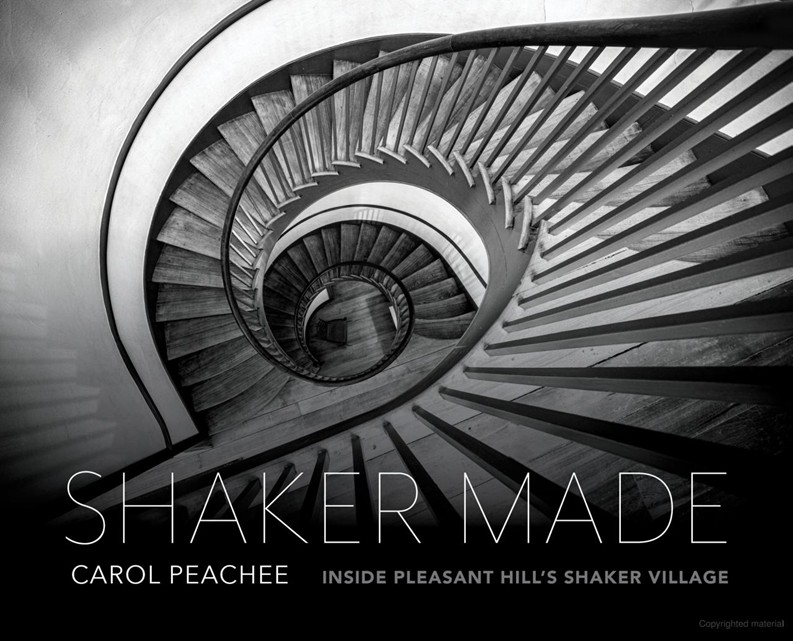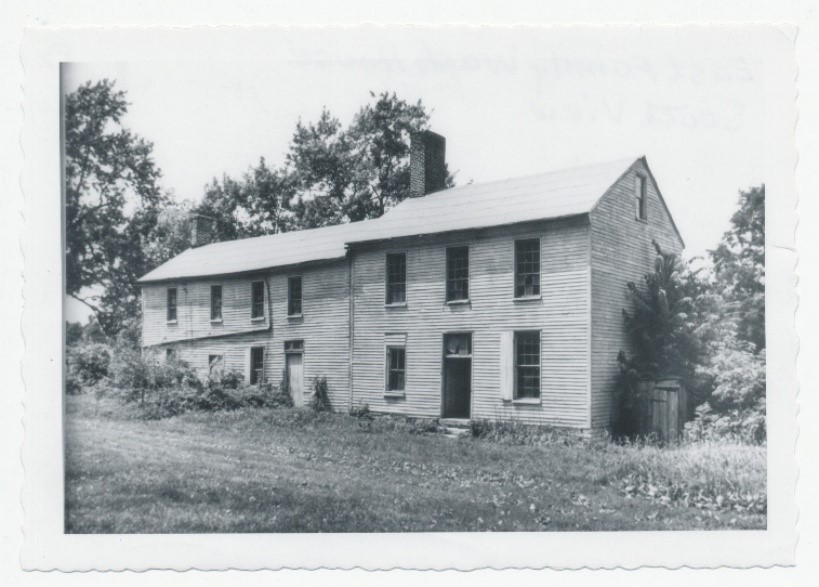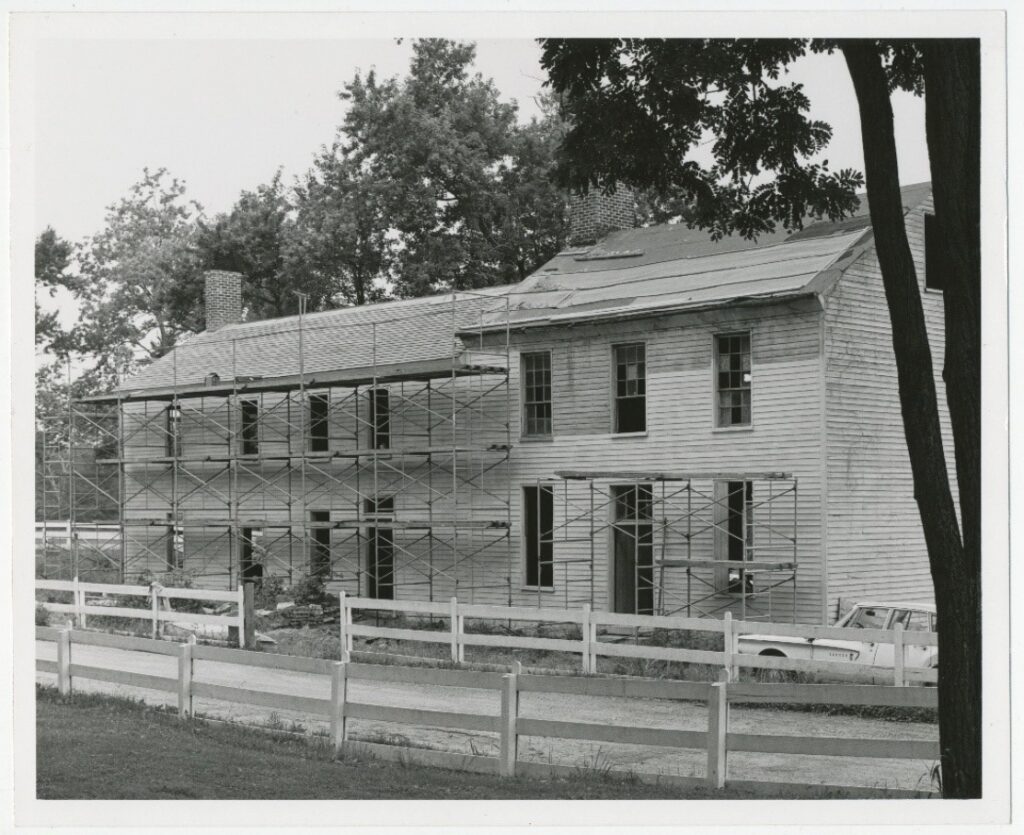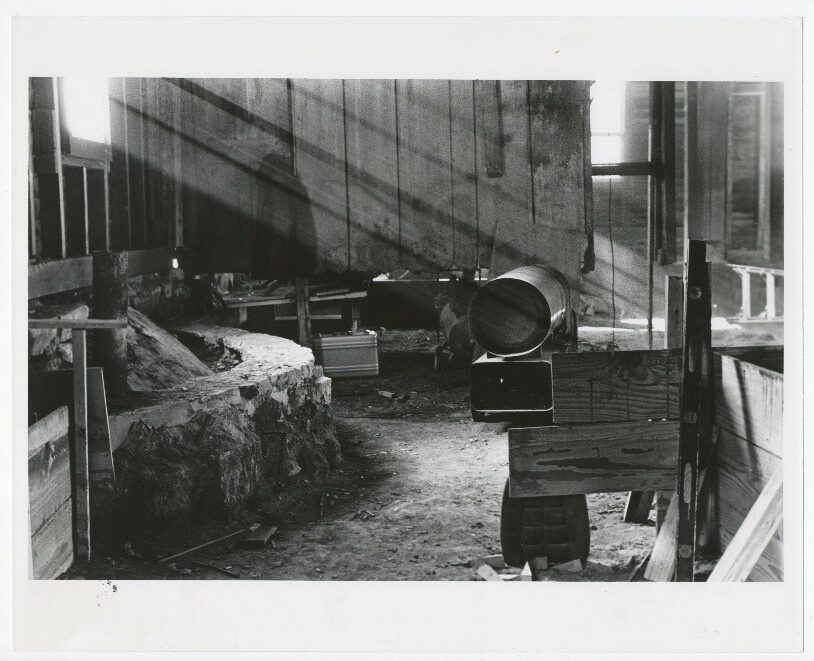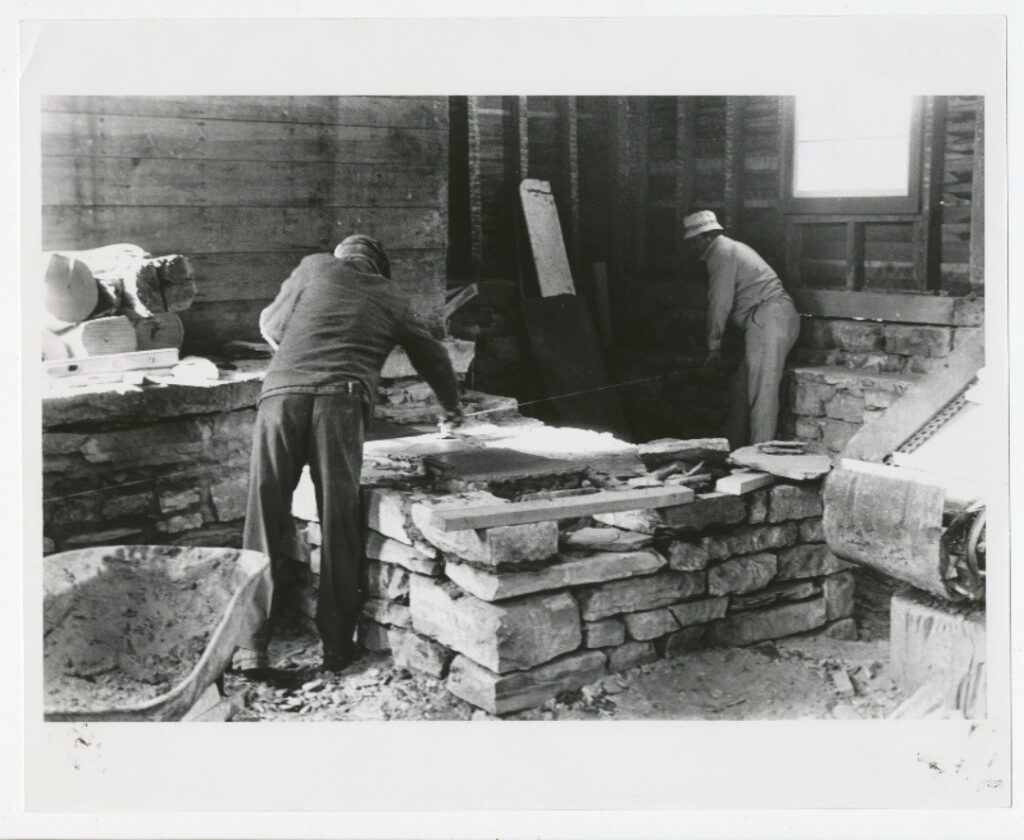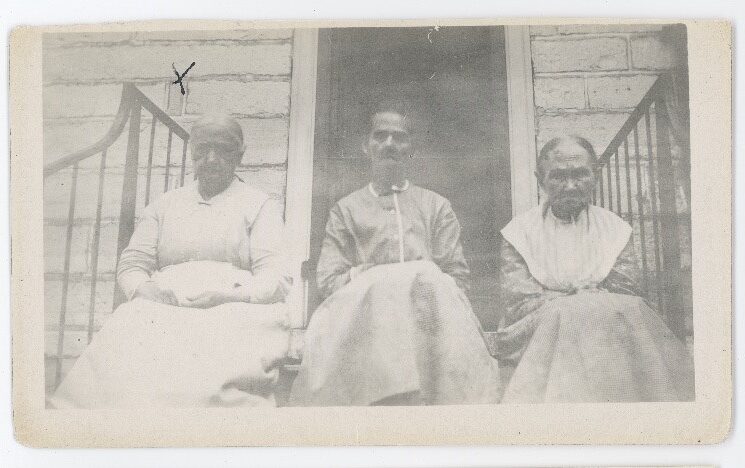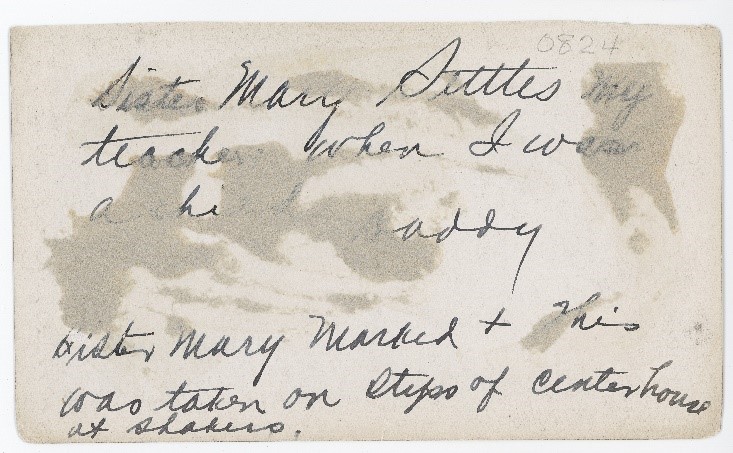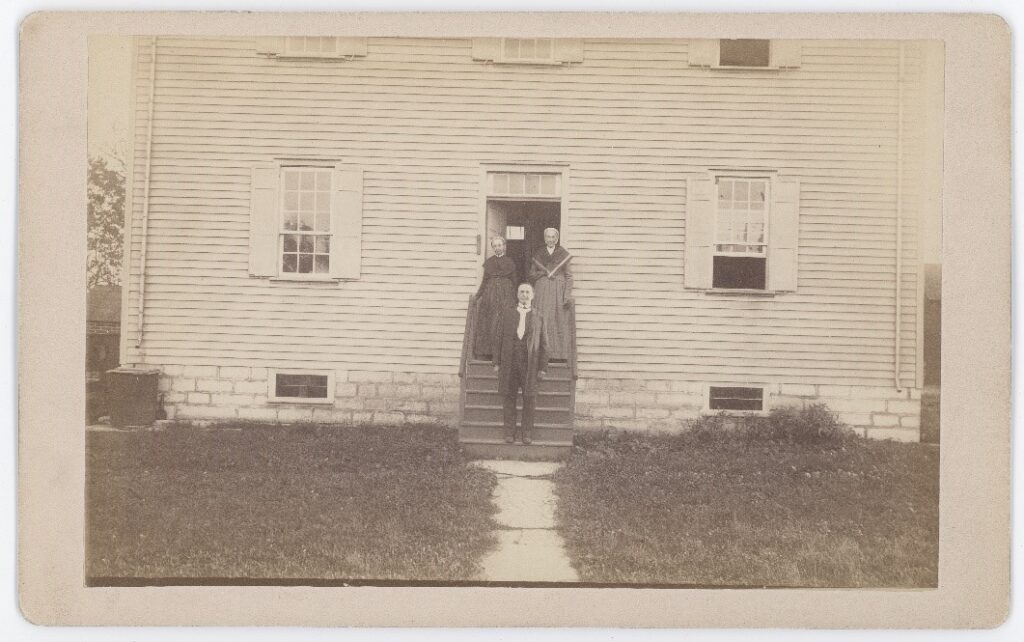Collections Intern Lauren Lieske
Walking into the collections building at Shaker Village of Pleasant Hill in Harrodsburg, Kentucky, I was awestruck by the sheer number of artifacts in the concrete structure. Due to my limited professional experience, I would never have conceived of such a unique way to disguise the practicality of housing historical objects amongst nineteenth-century structures; a cinderblock building within an old tobacco barn, or the Building in a Barn (BiB). Fully climate-controlled, Shaker furniture stacked to the ceiling, rolling shelves layered with various artifacts, cabinets named after Shakers, and a limited library and archives, the BiB was a physical manifestation of how I envisioned my professional life. Under the mentorship of Rebecca Soules, Collections and Education Director, and Alli Bramel, Collections Specialist, I was provided with the incredibly valuable opportunity to analyze, handle, organize, preserve, and curate these relics of Shaker life at Pleasant Hill.
During my work-study program at Berea College, I have gained career experience working in the Hutchins Library Special Collections and Archives. Working for the project archivist, Peter Morphew, I had achieved a background in sorting, scanning, cataloging, and curating archival materials and 3D objects. When I initially joined the department, I did not intend to continue working in informational and cultural studies beyond my undergraduate career. I began to adore my projects and tasks as I became more entrenched in archival and museum work operations. From then on, I knew gaining more insight and experience into this profession was essential. Additionally, since I worked mostly with archival materials, I wanted to introduce myself to the museum works and 3D artifacts. I was introduced to Shaker Village of Pleasant Hill’s summer internship at Berea College’s Internship Fair and discovered that they offered an opportunity to explore the career questions that had recently arisen.
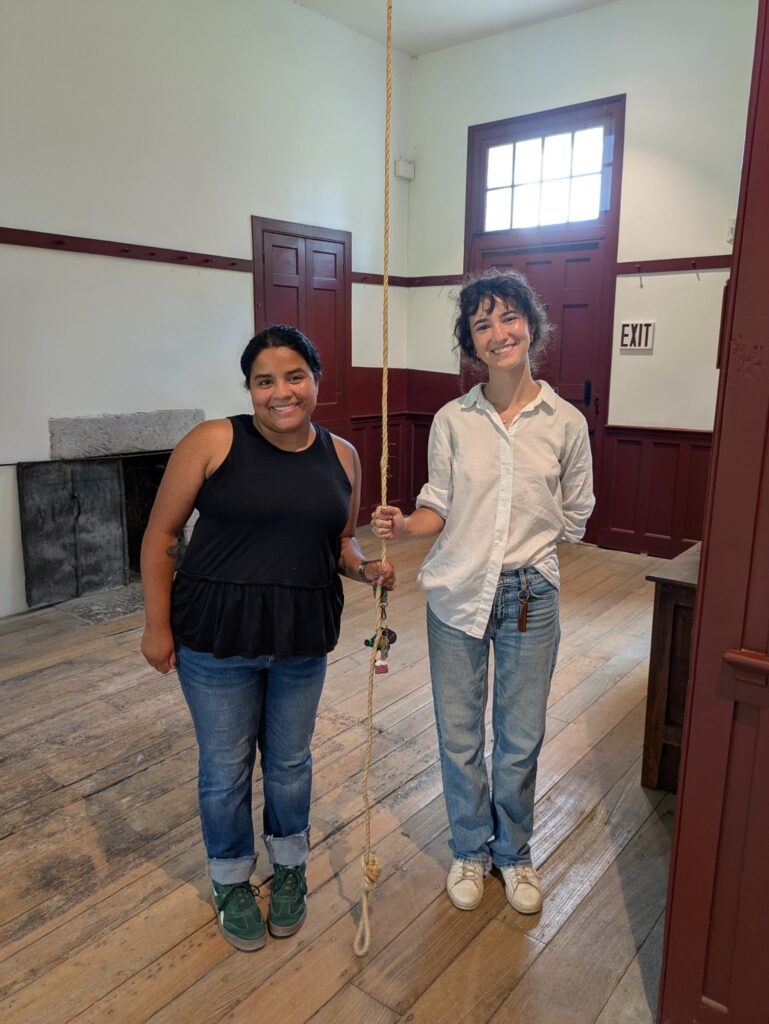
The first week, I was instructed to explore the Historic Center of the Village, which included most of the 34 historic structures that remained and were restored on the 3,000-acre property. Within almost every building, exhibits and demonstrations displayed exhibit labels and historical objects that told the story of the Eastern Kentucky Shakers. Once I became more knowledgeable about the Shaker Village history and layout, my supervisors began their instruction on the PastPerfect database software and their unique numbering system. Additionally, I was provided with finding aids and care manuals. Shaker Villages Collections Department’s policies, guidelines, and methods were distinct from those I had experience with at Hutchins Library. These differences in approaches and procedures presented me with an opportunity to expand my skills and challenged me with unfamiliar territory. Achieving diverse knowledge and abilities was paramount to my internship experience and future career decisions.
Once settled into the operations of the Collections Department and the Village itself, working alongside another intern, I was assigned my first project: organizing and creating a finding aid for the Flat File. I was thrilled to have the occasion to implement all that I had learned during my labor position at Berea College. However, I had never interacted with blueprints, historical maps, or large documents; most materials were in the flat file. For the finding aid, I was instructed to list each document’s title, author, number of pages, and number of copies. As far as organizing, as I continued to record the properties of each document, I decided to organize the twelve-drawer Flat File by specific categories and sub-categories. I was also taught the proper handling of such large materials without damaging the document or oneself, which most of the time required a second hand. I utilized much prior knowledge for this project, yet I encountered many moments to learn about this career’s process, functions, and appropriate procedures.
Among other duties and ventures during my time interning at Shaker Village of Pleasant Hill, I always worked on a project within the BiB. After I had checked my work on the Flat File, my fellow intern and I were assigned to house, organize, and document the Non-Archival Shaker Manuscript Collection in the Vertical Files. Once again, this archival project broadened my experience in library and information sciences. Most of the materials I processed were copies of Shaker correspondence, either between each other, separate villages, or the outside world. Other manuscripts, such as journals, legal documents, and financial records, were among the piles of affectionate letters and village reports. Under each category, I documented each file with its author, recipient, and date, which were commonly difficult to make out due to nineteenth-century cursive or photocopy distortions.
The Vertical File project also challenged me with new aspects of the archival and museum profession. More importantly, it reminded me why I was attracted to this career path in the first place, the interaction with not only historical materials, but also the lives of those in the past. History is worth studying because it is someone’s history, and making that accessible is a privilege for which I am grateful.
Nonetheless, not all my projects were archival, as my next project involved curating a new exhibit: Shaker Made: Photography by Carol Peachee. While I had minimal experience in curating and installing exhibits, I contributed to the Janis Ian Breaking Silence Exhibit at Hutchins Library. This third project was going on while I was working with the Non-Archival Manuscript Collection. Over a month before the exhibit’s opening, we met with Carol Peachee to discuss the theme and layout, taking room measurements, calculating the size and amount of each photograph, and setting the dates for installation and opening. Shadowing my supervisors was especially enlightening, allowing me an understanding of the discussions that occur in the initial stages of exhibit curation and installation. After obtaining the photographic prints or installing them, I was assigned to catalogue them in PastPerfect, with their Object IDs, accession numbers, titles, descriptions, dimensions, and locations. Despite the tediousness of cataloguing, I enjoy inputting information into a database.
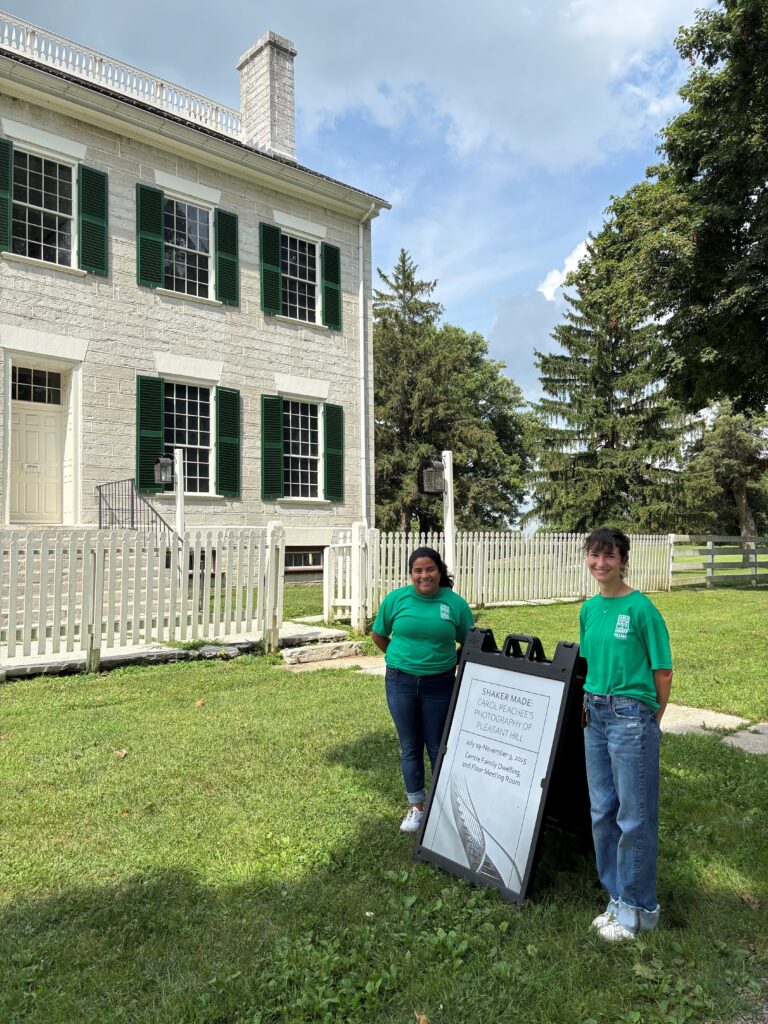
The installation day was frustrating, invigorating, and fulfilling all at once. Each photograph was hung using fishing line, making it challenging to hang the pictures in parallel. However, once achieved, the completion of such a challenge was satisfying. On opening night, I was so pleased with what I participated in and what I had learned in the process. Due to this experience, I would like to be involved in more curation opportunities in the future.
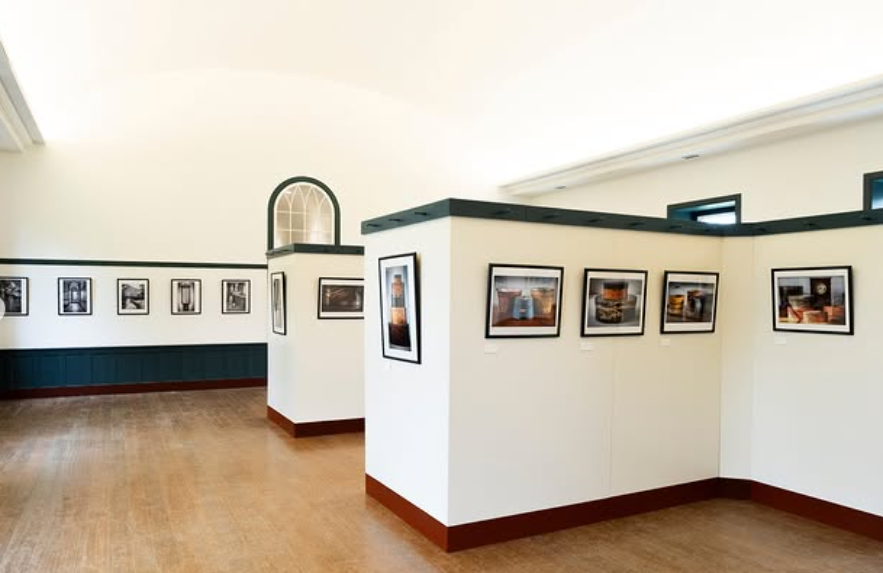
My final project also entailed curation, which I was eager to begin. Earlier in my internship, my supervisors and I had discussed creating displays for the two Welcome Center Cases. Once my last projects were finalized, I began to search through PastPerfect to identify potential topics, subjects, and themes. These cases obviously were limited in space, so only artifacts within their dimensions could be included, restricting my options for issues and items. With dimensions in mind, my fellow Intern and I cross-referenced our lists and decided to center our display on needlework. After collecting Object IDs and titles of artifacts in PastPerfect, I sourced and gathered the items from their designated locations in the BiB. Admittedly, I found navigating the BiB challenging, especially in locating smaller objects. However, when finding an artifact on my list, I usually found another object to include or replace the one I was searching for.
Once I had located and retrieved all necessary items, I placed them on the cases’ base perimeter cutouts. Shifting and arranging the artifacts in association was very gratifying, as I could exert creativity in assembling the cases’ layout. Moreover, deciding which objects to include involved a creative eye: comparing colors, sizes, shapes, and heights in correlation. I could express myself within my work, even in writing up the theme and object descriptions. This final project exemplified my motivations in this career path, as I interacted with historical objects and organized a presentation of them.
Behind the main projects I contributed to during my internship at Shaker Village of Pleasant Hill, there were other tasks to be completed. One of the first tasks was moving and assessing a new acquisition: a Pleasant Hill Shaker blanket chest. I had never handled historical furniture before, so I was taught the proper attire, precautions, and lifting of larger objects. This was beneficial instruction, and I will take the knowledge into my future career. Additionally, I was assigned to shadow two interpreters from the Program Team to gain insight into the schedules, information, and procedures of giving tours. Shadowing also helped me grasp the general history of the village as my internship was starting. I also contributed to the relaunch of the Trustee’s Restaurant by participating in a commercial for the opening. This task allowed me to interact with departments outside my own, specifically the Marketing Department. I attended many meetings, including a Historic Preservation, Collections, and Museum Committee Meeting, a monthly Marketing Meeting, a Safety Meeting, and an All-Staff Meeting. These various tasks throughout my internship provided me with an understanding of company operations and interdepartmental communications.
My summer internship at Shaker Village of Pleasant Hill was an indispensable experience due to its contributions to expanding my skills, expertise, and understanding in the career field I intend to pursue. The historic site is a pleasure to work at, mainly because it is surrounded by nature and historical artifacts. However, the knowledge and experience I gained made my internship so valuable. In organizing and documenting two collections in the library, I was allowed to utilize what I had previously learned, and I was still challenged with new and difficult assignments. My supervisors involved me in installing an exhibit opening and allowed me to curate a display. I worked alongside others, whether the other interns, my supervisors, different departments, or artists, and those connections made are essential to obtaining a space within archives and museum works. Even the daily chores around the village taught me valuable teamwork, perseverance, and problem-solving lessons. Most of all, my experience at Shaker Village of Pleasant Hill provided me with introspection on my appeal to collections management, whether archival or 3D, confirming my pursuit in the informational sciences profession.
